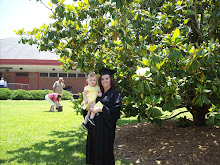What is productivity software? How can it be adapted to benefit teaching and learning? Productivity software is usually generic business-application software that educators can use and adapt for the administrative and professional tasks they must address. A few examples of productivity software are word processing, spreadsheet, database management, and presentation software. The software program can be purchased individually or in a bundle or suite. The most popular is Microsoft Suite, which contains Word, PowerPoint, Excel, and Access. My favorite software to use is PowerPoint. It is so much fun to use. I create a lot of PowerPoint presentations at work. Using PowerPoint can make a presentation more interactive and visual.
Using PowerPoint in the classroom can be beneficial for the teacher and the student. You can create presentation for lecture. You can insert examples of the class work. You can create quizzes for the students to make sure that each student understands the information that is being presented to him or her. The teacher can insert short films into the PowerPoint to show the students.
Microsoft Word is the most used productivity software. Word is word processing software. Word took the place of a typewriter. As a teacher, you can create documents to use as handouts for your students. You can save the documents and add or delete information to it when as needed. You can add pictures and graphs to the documents. One of the many advantages of Word is spell checking. With the typewriter, the typist had to make sure that he or she had all the words spelled correctly. I remember typing reports for a class and getting points deducted from misspelling words. Word also checks for sentence fragments.
W
hat are the advantages and features of electronic spreadsheets? How can you see them as a benefit in an educational environment? Electronic spreadsheets software is to numeric data what word-processing is to text. There are many features of spreadsheets. Below are a few of the features and benefits:
1. Spreadsheets and workbooks:
a. Organizing numerical data.
b. Creating and testing formulas.
c. Formatting data to produce and concise reports.
d. Creating customized grade books.
e. Tracking students’ data.
f. Presenting clear reports.
2. Auto formatting:
a. Teachers and students can create professional-looking reports
3. Charts:
a. Tool for visual presentation in student reports.
b. Tool to view saved data visually for better understanding.
c. Can used as a way to visually explore alterations of the numeric data
in a spreadsheet.
d. Can be used for preparing visual of abstract mathematical relationships.
4. Formulas and Functions:
a. Create and test formulas.
b. See changes in mathematical relationships as data changes.
c. Teachers can demonstrate math concepts in action.
d. Test and use appropriate grading formulas.
e. Show students how final grades are calculated.
5. What-if Analysis:
a. Seeing the impact of data changes in math problems.
b. Testing and demonstrating relationships of data.
c. Explaining how different grades will affect the student’s final grade.
6. Archiving:
a. Saved data files are easy to access and update to keep records current
